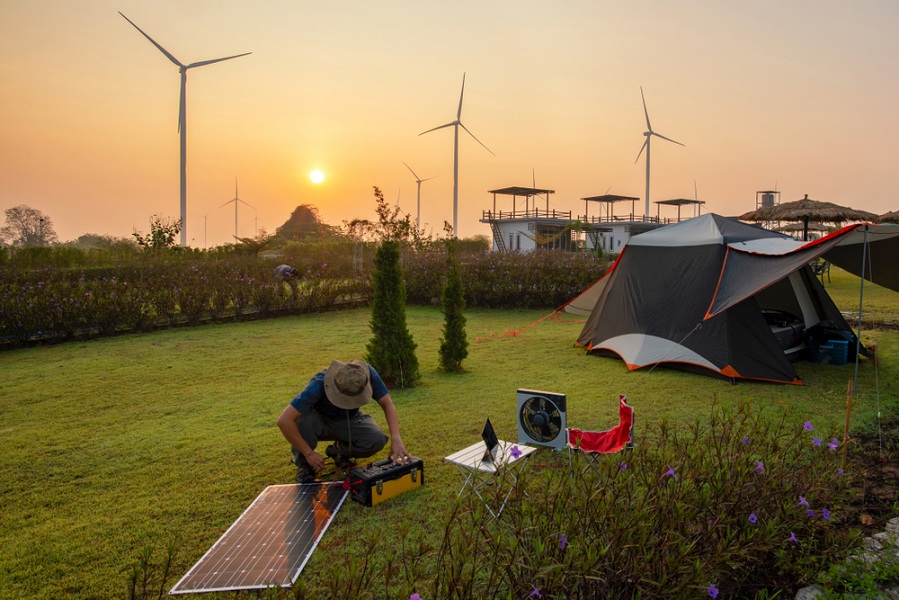A solar generator only lasts as long as the battery inside it. That’s because the battery is the most expensive and important component of a solar generator. Once the battery dies, the other components are no longer functional.
How long a solar generator battery lasts depends on several factors including battery type (chemistry), how heavily it’s used, how much you discharge it, and environmental conditions particularly temperature.
In this guide we discuss how long solar generator batteries last, what affects their lifespan, and what you can do to make your solar generator battery last longer.
Factors Influencing The Lifespan of Solar Generator Batteries
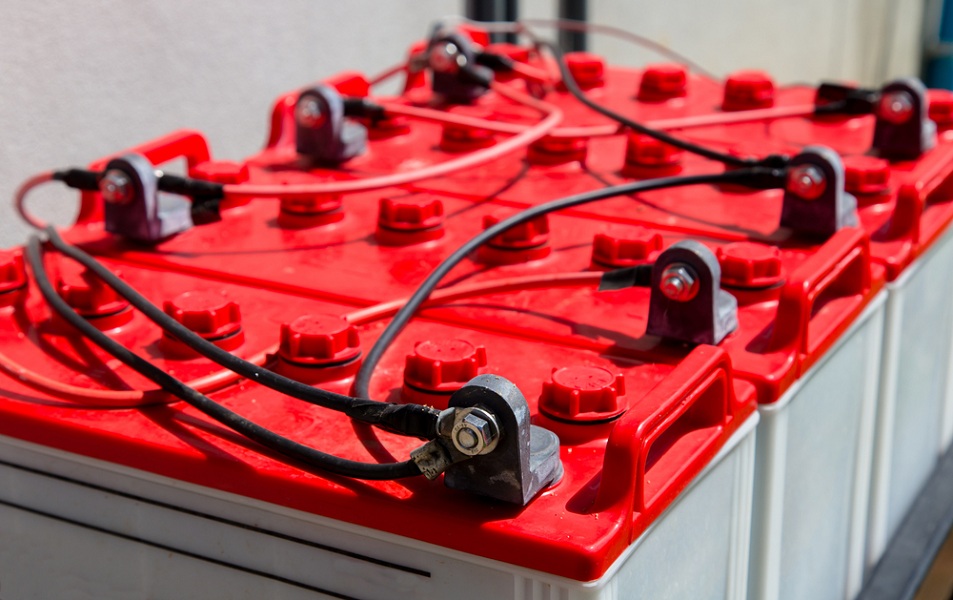
Two solar generator batteries rated the same can have widely different lifespans.
There are several factors that influence how long a solar generator battery lasts, including:
Cycle Life: The Right Way To Measure The Lifespan of a Solar Generator Battery
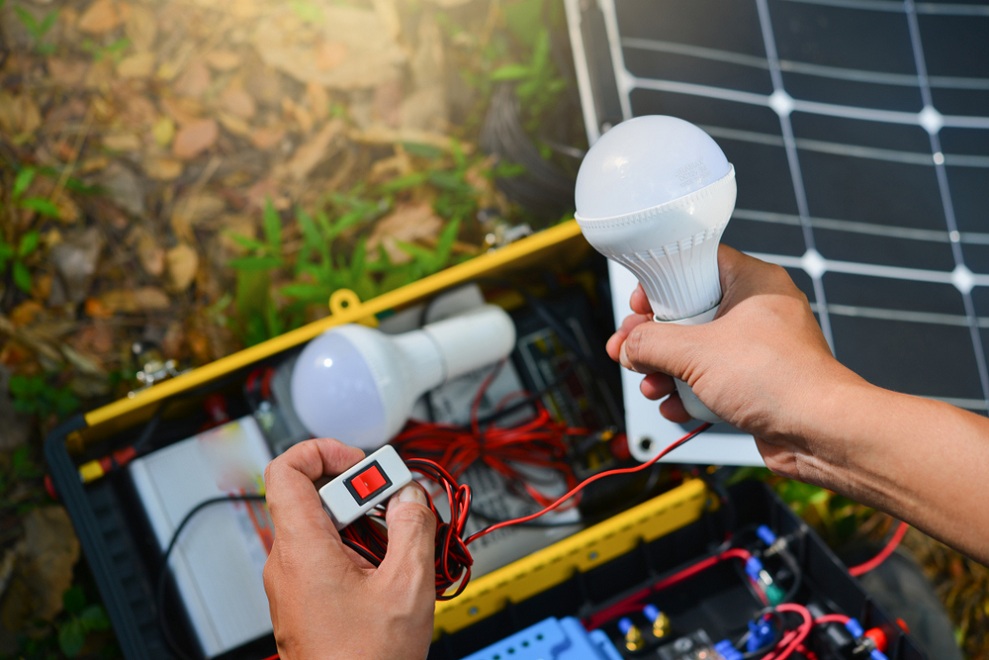
‘Years’ is not the most accurate way to describe the lifespan of solar generator batteries.
Two batteries that have been around for the same number of years could be in two very different conditions.
It’s like vehicle mileage. One 10-year old car will not have the same mileage as another 10-year old car.
The proper way to measure battery lifespan is using cycle life.
The cycle life of a battery is the number of charge and discharge cycles it can complete before its storage capacity falls below 80%.
Every time you discharge and charge a battery, it degrades slightly. Over hundreds of these cycles, it stores less and less charge.
When a 100Ah battery can no longer hold more than 80Ah of charge, it’s close to the end of its life.
You can still keep using it, but you’ll need to charge it more frequently. That further degrades its performance and capacity until the battery truly dies.
How Long Do Different Solar Generator Batteries Last?
Li-ion Batteries
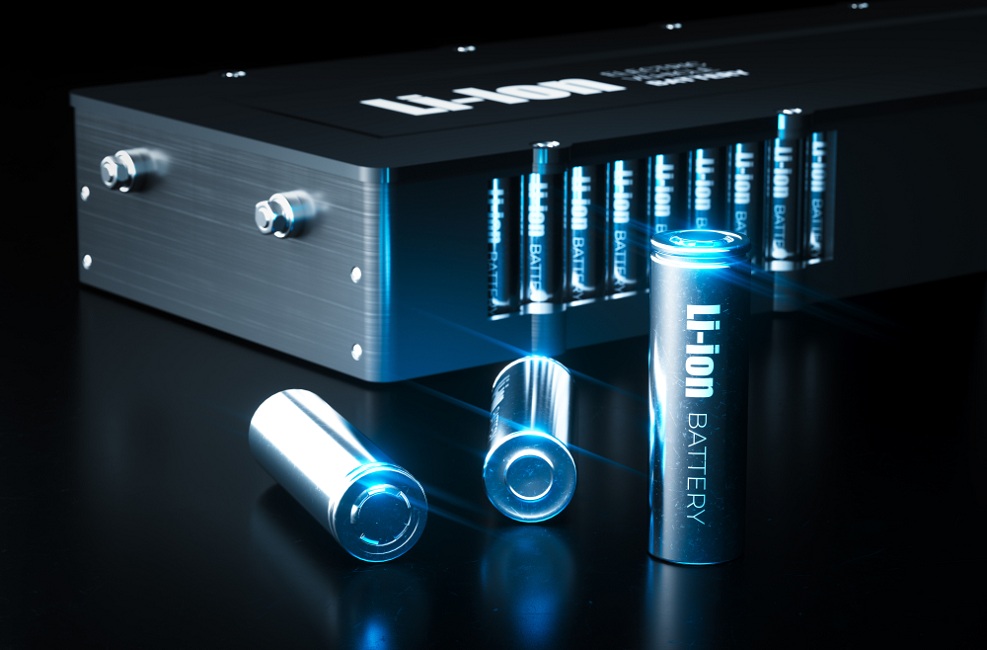
Many solar generators today contain a traditional lithium-ion battery, specifically lithium cobalt oxide or LCO.
Li-ion batteries have become popular in solar applications because they have a high energy density, they can be discharged deeper than lead acid batteries, they are lightweight, they hold a steady voltage long into their discharge, and they last longer.
With proper care, the cycle life of a typical lithium-ion solar generator battery is 500 cycles, which means you can charge and discharge the power station 500 times before it’s capacity falls to 80%.
With daily discharging it will take a Li-ion solar battery about 2-3 years to get through 500 cycles.
Of course, you can keep using the solar generator even with the reduced capacity. The battery will truly die after 2,000-3,000 cycles. You can keep using it for up to 5-10 years before it completely degrades.
Assuming you use your solar generator only during blackouts and occasional off-grid trips, it’ll still naturally deteriorate over time for other reasons than discharging. This is called calendar aging.
A typical lithium-ion battery has a natural calendar lifespan of about 20 years.
LiFePO4 Batteries
Lithium iron phosphate (LiFePO4) batteries are a relatively new type of lithium-ion battery. They are used in some solar generator brands like Bluetti.
LiFePO4 solar generator batteries have a much longer useful cycle life than traditional lithium-ion batteries. In addition, they can usually be discharged all the way to 100%.
At a 100% discharge, LiFePO4 batteries have a cycle life of 1,000 to 3,000 cycles. If you discharge the battery to 80%, you can get a lifespan of 3,500 to 5,000 cycles - which is 7-10X the life of a traditional Li ion battery.
With proper care, you can expect a LiFePO4 to last at least 5-7 years assuming full daily discharge. The cycle life extends to 10 years if you maintain a 80% discharge or less.
As you can see, this makes LiFePO4 batteries a much less costly solution for off-grid living or any application where your batteries will be depleted every day.
Lead Acid AGM & Gel Batteries
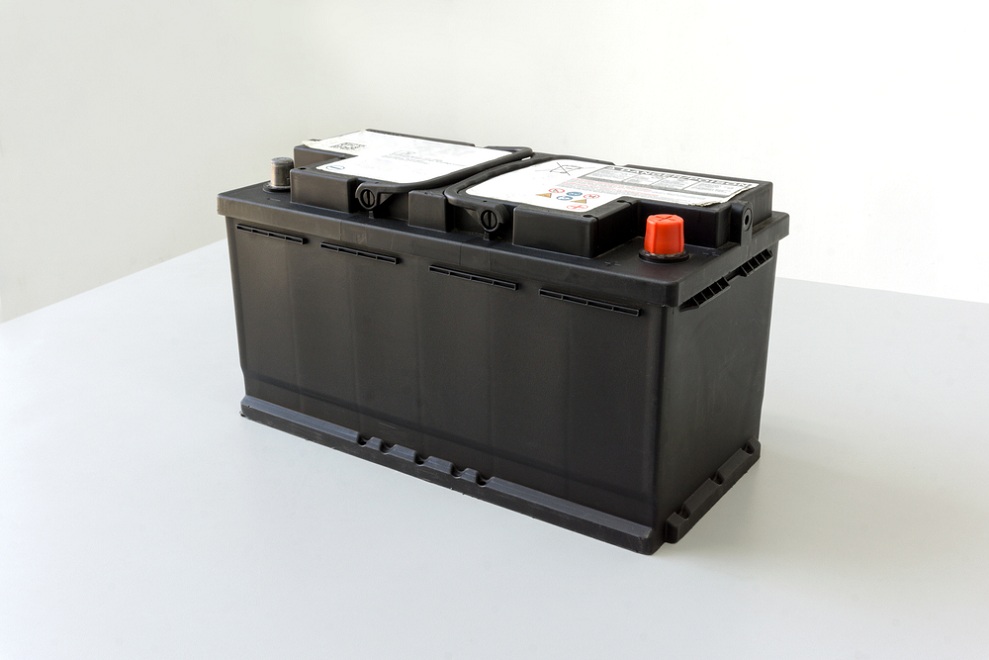
Solar generators with sealed lead acid batteries are not that common, but they are still around.
AGM (absorbed glass mat) and gel batteries are the two most common types of lead acid batteries used in solar generators and solar systems.
The average cycle life of an AGM battery is 300 to 500 cycles depending on depth of discharge and ambient temperature. This translates to about 3-5 years of use.
Gel batteries last longer than AGM batteries. They have a cycle life between 500 and 1000 cycles depending on how deeply you discharge the battery.
Most people get 5-6 years out of a gel battery. With really good care and by maintaining a maximum 50% discharge, you could probably stretch lifespan to 10 years.
That said, lead acid batteries cannot hold a steady voltage as long into their discharge cycle as lithium cells can, and their performance curves shift over time.
So you need to be careful about how you wire them together and regulate their output. This is why you should not combine old and new lead acid batteries in the same power bank circuit.
How To Make A Solar Generator Battery Last Longer

Here are 5 tips to increase the lifespan of your solar generator battery.
1. Avoid Excess Heat
Heat is the number one enemy for solar generator batteries of any kind, but lithium ion batteries are especially vulnerable to thermal aging.
Solar generator batteries are best maintained at a room temperature of around 25C or 77F.
Going above 30C will have a negligible effect on LiFePO4 batteries, but may impact older lithium ion cells..
But anything hotter than 40-45C (113F) will cause a significant degradation in battery performance and capacity.
Heat destroys lithium batteries even when not in use, so you should always store your batteries away from extreme temperatures.
Tip: To protect your solar generator battery, do not leave it in the sun or in a hot enclosed space like a garage when charging with solar panels.
If necessary, use an extension MC4 or 8mm cable to allow you to place the solar generator inside a cooler room or in the shade near a fan or breeze while it charges.
2. Follow the Manufacturer’s Charging Instructions
Another big problem that affects battery lifespan is overcharging.
This is usually not a big concern with solar generators since there’s a charge controller and battery management system (BMS) inside to prevent too much voltage and current from reaching the cells.
That doesn't mean you can hook up the solar generator to just any solar panel or AC adapter, though. You could damage other components like the charge controller and BMS, thus leaving the battery unprotected.
Always check the input specs of the solar generator before you charge it with solar panels or a wall outlet. Make sure you are within the voltage, amps and power range specified.
This is also why you should only use the AC or 12V charger provided by your solar generator manufacturer.
3. Don't Discharge the Battery Too Far
The deeper you discharge the solar generator battery, the fewer cycles you’ll get out of it.
Lead-acid batteries are especially vulnerable to deep discharge. It drastically reduces their lifespan.
AGM and gel batteries can be discharged deeper than flooded lead acid batteries (70-80%), but it’s recommended that you don't go below 50% to get the longest lifespan.
As for lithium batteries, the depth of discharge is normally around 80%. Many LiFePO4 batteries can handle a deeper discharge of up to 90% or even 100% without greatly affecting battery health.
But if you want the solar generator to last long, don't discharge more than 80%. It’ll add a couple of years or more to the battery’s lifespan.
4. Keep the Battery Partially Charged When Not In Use
Lithium batteries have a slow discharge rate. So you don't need to keep charging them when not in use.
You only need to charge it every few months to keep the battery above 50%. You don't need to recharge it all the way to 100%, either.
This will keep the battery from fully discharging, which can affect its lifespan.
AGM and gel batteries also need to be recharged every 3-4 months at a minimum. We recommend checking their status every week or two, however, because current can leak in any power system.
5. Limit Use of Pass-Through Charging
Most solar generators support pass-through charging, which means drawing power from the solar generator while it’s charging from a wall outlet or solar panels.
Some manufacturers like Jackery and RavPower recommend you don't use pass-through charging frequently as it can reduce battery lifespan.
Pass-through charging means it’ll take longer for the solar generator battery to fill up. The act of recharging generates heat. So the longer it takes to charge the battery, the more heat is generated.
Check Out Our Reviews For Long-Lasting Solar Generators
If you want a long-lasting solar generator, it’s important to buy from a trusted brand like Jackery, Goal Zero, Eco-Worthy, and Bluetti. Avoid cheap Chinese knock-off brands.
On this site we’ve reviewed many proven solar generators that will serve you well for years. See our top picks for whole house backup, camping, portable solar generators, and the best solar generators for boating and RVs.
Frequently Asked Questions
What types of batteries last the longest?
For applications involving regular discharging, lithium iron phosphate (LiFePO4) batteries offer the longest lifespan by far, easily beating lead acid, AGM, gel, or traditiional lithium ion cells.
LiFePO4 batteries often last more than 3,000 to 5,000 cycles, which is 5-10X more than any other type.
Do AGM batteries last longer than lead acid?
Yes. AGM batteries are a type of lead acid battery that lasts longer than traditional flooded lead acid batteries.
Gel batteries, another type of lead acid battery, also last longer than flooded lead acid batteries. You can expect to get 300-500 discharge cycles from an AGM battery and 500 to 1,000 cycles from a gel battery.
Can you replace solar generator batteries?
There are a few AGM power stations sold today that allow you to swap out the old battery for a new one. But most solar generators today use non-replaceable lithium-ion batteries.
Technically, you could probably replace the lithium battery in a solar generator. But it probably wouldn’t much financial sense and would definitely void the warranty.
Can lithium-ion batteries last 10 years?
Yes. With good care - no overcharging, no exposure to excess heat, no deep discharge - a lithium-ion battery can last up to 10 years while still offering a decent storage capacity.
Can an AGM battery last 10 years?
Yes, theoretically. Similar to a lithium battery, an AGM battery can reach the 10-year lifespan if you take good care of it. This means you don't overcharge it and you don't discharge it more than 50%.
Can I leave a solar generator plugged in?
Yes, it’s safe to leave your solar generator plugged into a wall outlet. You can also keep solar panels plugged in for as long as you want.
The charge controller and battery management system inside the solar generator ensures you don't overcharge the battery.
That said, if you don't plan to use the solar generator for a long time, unplug it and store it in a cool and dry place. Recharge it every 3 months to keep the battery above 50%.

